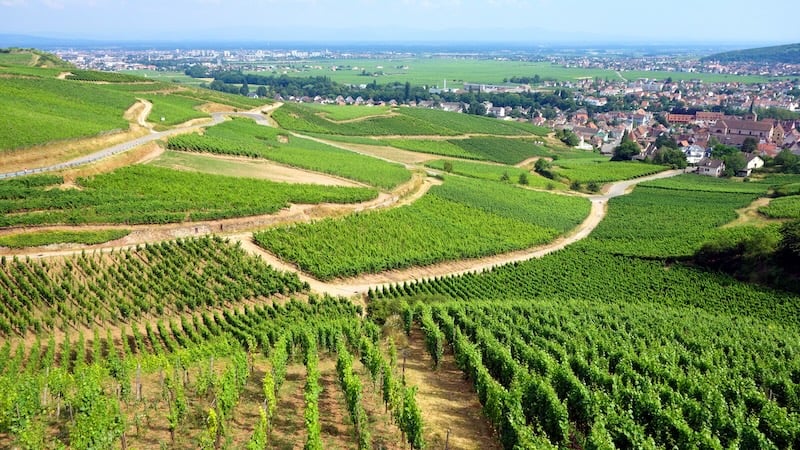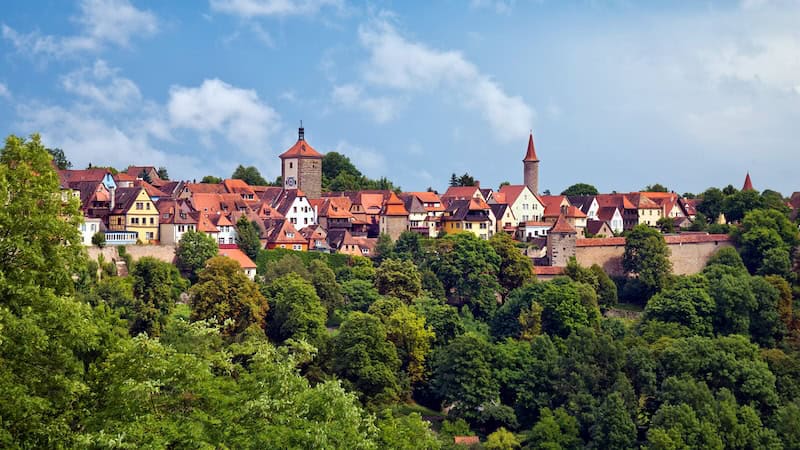Book Excerpt: Ray McAllister’s "Ocracoke: The Pearl of the Outer Banks"
An excerpted passage from Ray McAllister's newest book, "Ocracoke: The Pearl of the Outer Banks"
Myth freely intertwines with fact about the man, in part because of a dearth of solid information. Blackbeard the Pirate was likely born Edward Teach or Ned Teach, though possibly Edward Drummond, though perhaps more possibly Edward Thatch . . . or Thach . . . or Thache . . . or Tash . . . or Teache.
His early life is simply unknown. He was born about 1680, give or take a few years, the date calculated backward from his estimated age of 35 to 40 at his death in 1718. He is most often said to have been born in Bristol, England, though school records there do not indicate he attended — and he clearly was educated somewhere. London, Jamaica and Philadelphia have been offered as alternative birth sites. So, too, have the Carolinas. Virtually nothing is known of him before his days of piracy, which began sometime after 1713, perhaps as late as 1716. It was during 1717 and 1718 that he lived his short public life, terrorizing the high seas.
* * *
BLACKBEARD WAS A PHYSICALLY IMPOSING and exceedingly dangerous man, as well as an intelligent one. Captain Charles Johnson, in A General History of Pyrates, published in 1726, eight years after Blackbeard’s death, described how Blackbeard carefully created his striking name, along with his appearance, to enhance his reputation for evil:
Our Heroe, Captain Teach, assumed the Cognomen of Black-beard, from that large Quantity of Hair, which, like a frightful Meteor, covered his whole Face, and frightened America more than any Comet that has appeared there a long Time. This Beard was black, which he suffered to grow of an extravagant Length; as to Breadth, it came up to his Eyes; he was accustomed to twist it with Ribbons [and] turn them about his Ears.
* * *
FOR JUST THOSE TWO YEARS, 1717 AND 1718, Blackbeard haunted the waters between the mainland and the West Indies, then those off the Atlantic coast from Charleston, South Carolina, northward to Pennsylvania. His men ruthlessly attacked merchant ships, stealing goods and, when the occasion demanded, the ships themselves. He killed some crew members in battle, took others into his own crew, and simply set others adrift or put them ashore. Interestingly, there are no accounts of Blackbeard’s killing anyone outside of battle. Perhaps his fearsome reputation made it unnecessary.
A preliminary database compiled by researchers at the North Carolina Maritime Museum in Beaufort shows Blackbeard’s men captured more than 50 ships. Among them was the French slave ship Concord, which he took as his own. Blackbeard outfitted it with 30 guns and rechristened it the Queen Anne’s Revenge. This was a powerful warship now, boasting a crew of 300 men.
* * *
TO BE FEARED STILL MORE, Blackbeard began enhancing his physical image. His beard remained long and wild in an age when nearly all men were clean-shaven. He added other affectations as well. According to Johnson, he “stuck lighted Matches under his Hat, which appearing on each Side of his Face, his Eyes naturally looking fierce and wild, made him altogether such a Figure, that Imagination cannot form an Idea of a Fury, from Hell, to look more frightful.” In battle, the smoke drifting around his face gave him a demonic look.
This was psychological warfare at its finest. Crew members of merchant ships under attack often gave up simply upon seeing him.
* * *
BLACKBEARD MOVED ON TO THE CAROLINAS in the spring of 1718 with a fleet of four vessels and between 300 and 700 pirates — 400 is the usually accepted number. He and his men famously blockaded Charleston Harbor that May, capturing eight or nine ships over a week, taking their goods, and ransoming the vessels. Blackbeard’s raids and those of other pirates, however, were turning public sentiment sharply against them.
Afterward, Blackbeard sailed north. He and his cohorts apparently sank two of his own ships, including the Queen Anne’s Revenge, in North Carolina’s Beaufort Inlet, marooning 17 of his most troublesome pirates on an uninhabited island. (The Queen Anne’s Revenge would remain lost underwater for the better part of two centuries until its rediscovery in 1996; an archaeological exploration, documentation and recovery of the ship’s remains have been under way since then.)
He sailed on to Bath, where, during a crackdown on piracy, he apparently “retired.” Blackbeard, whose desire for women was exceeded only by his lust for piracy, took a teenager as his 14th wife. He also offered her intimacies to some of his mates, as he had with other women. Meanwhile, he was granted amnesty by supportive North Carolina governor Charles Eden.
This interlude proved something of a working retirement. Blackbeard had downsized, to be sure. For several months in the summer and early fall of 1718, he set sail from Bath and his new base, Ocracoke, on “trading voyages.” Though his operation was smaller now — he had far fewer crew members on his sloop Adventure — the results were oddly familiar. In early September, according to [historian David] Stick, the pirate arrived off Ocracoke with a French ship laden with sugar and cocoa. Blackbeard’s explanation: He had discovered the ship at sea, wrecked and abandoned by its crew. He proceeded to divide the cargo with Governor Eden and the North Carolina colony’s secretary.
The coincidences became harder to accept. Soon, his “trading voyages” no longer involved just French ships at sea but small vessels in the sounds. Coastal residents bemoaned their loss of livelihood and feared for their safety.
About this time, in the early fall of 1718, a number of pirates gathered for a dayslong party near Blackbeard’s base at Springers Point, close to the south end of the island. Several of the most notorious were there, including Blackbeard, the murderous Charles Vane, Calico Jack Rackham, Robert Deal and navigator Israel Hands. So, too, was Blackbeard’s bodyguard, Caesar. Rum was in abundance. Hogs and cows were butchered and barbecued on the beach.
The party came to the attention of Virginia Gov. Alexander Spottswood. At the behest of North Carolinians leery of their own governor’s motives, and because harm had come to Virginia shipping — and possibly also because it would help him politically — Spottswood offered rewards and enlisted two Royal Navy men. The leader of the mission was Lieutenant Robert Maynard. Accompanying him was a Mr. Hyde. Given sloops and a total of about 54 men, they headed south.
They reached Ocracoke Inlet late on November 21.
* * *
[BLACKBEARD] ADROITLY MOVED THE ADVENTURE into a small channel obscured by a hidden sand bar. The pirate was always a crafty tactician, and this early move paid off. The two navy sloops, flying the Union Jack, followed — and were immediately hung up on the sand bar.
Blackbeard and the navy lieutenant, according to reports at the time, were close enough to communicate. Blackbeard yelled a demand that Maynard identify himself, followed by a demand that he come on board. Maynard’s reply made it clear he would come aboard only when he stormed Blackbeard’s vessel.
The pirate took a bowl of liquor and drank to the two sloop captains with these words: “Damnation seize my soul if I give you quarter or take any from you.”
Maynard yelled back, “I expect no quarter from you, nor shall I give any!”
The Battle of Ocracoke Inlet was under way.
Blackbeard ordered the Adventure’s eight cannons to fire on the attackers. Four aimed at Maynard’s sloop and the other four at Hyde’s. Having no cannons themselves, the sloops were devastated. Twenty men on Maynard’s were killed. Another nine were killed on Hyde’s, including Hyde himself. Hyde’s sloop was damaged so badly it was effectively out of the battle.
That left only Maynard.
The lieutenant desperately ordered everything thrown overboard that could be spared. Coupled with a rising tide, the maneuver freed his sloop, and he headed toward Blackbeard’s. Maynard had one more tactical move up his sleeve: He ordered most of his crew below deck.
Seeing Maynard’s sloop approaching, Blackbeard ordered his men to prepare to board and engage in hand-to-hand fighting, using the lethal cutlasses that had helped make their captain so feared.
But first, Blackbeard, too, had a surprise. His men had “grenadoes,” the equivalent of hand grenades, which Stick described as “case bottles filled with powder, shot, and slugs of iron, with a quick-match in the mouth.” Blackbeard’s own invention, they had worked well in the past, causing death and pandemonium on other ships before he and his men boarded.
The grenadoes, lit and thrown aboard, enveloped Maynard’s sloop with smoke. When Blackbeard came near, he saw virtually no one. The grenadoes must have cleared the deck. He ordered his men to board.
What followed was a bloodbath. It was, Butler declared, “the bloodiest six minutes ever fought on Carolina waters.”
Maynard’s men, storming up from below, now outnumbered the invading pirates. Both camps fought with swords and single-shot pistols. The deck was already slippery from the blood of Maynard’s dead crewmen. Bodies were everywhere. Now, more blood flowed, drawn by the flesh-slicing cutlasses. “The sea,” Johnson wrote, “was tinctured with blood around the vessel.”
As in a Hollywood movie, the two major figures faced off.
Both Maynard and Blackbeard pulled their pistols. They fired. Blackbeard, being rushed from all sides, missed. Maynard’s shot, though, ripped into the pirate’s big body.
Blackbeard kept attacking.
The pirate and the lieutenant continued with their swords. A mighty blow from Blackbeard’s cutlass snapped Maynard’s sword off near the hilt. Maynard tossed the useless weapon at him and pulled another pistol. He was about to fire when Blackbeard moved in for the kill; some accounts say he was using his sword, others a fresh pistol.
No matter.
A Scottish crew member turned quickly and saved his captain, slashing Blackbeard with his sword. It cut deeply into the pirate’s neck. Blood spurted. Blackbeard continued to fight, but other attackers turned on him. The repeated sword blows, coupled with pistol shots, took their toll. He died in a pool of his blood.
Once Blackbeard was dead, the battle ended within minutes. More pirates were killed, but most jumped overboard, to be captured later.
Maynard ordered Blackbeard’s head cut off. It was attached to his vessel’s bowsprit for the journey home. Later, it would be displayed on a stick in Virginia as a warning to would-be pirates.
Blackbeard’s headless body was thrown in the Ocracoke waters. Legend says it swam several times around Maynard’s boat before sinking.
By Maynard’s reckoning, the fatal throat slashing was one of 25 significant wounds — five pistol shots and 20 sword strokes — inflicted on Blackbeard. They had been enough to kill several men.
RayMcAllister.com
“Here,” wrote Johnson, “was the end of that courageous brute, who might have passed in the world for a hero had he been employed in a good cause.”
Blackbeard’s legend grew larger still after his death. Within months, the teenage Benjamin Franklin was hawking the ballad “A Sailor Song on the Taking of Teach or Blackbeard the Pirate” in the streets of Boston. The concluding stanza:
And when we no longer can strike a blow,
Then fire the magazine, boys, and up we go!
It’s better to swim in the sea below
Than to swing in the air and feed the crow,
Says jolly Ned Teach of Bristol.
For Ocracoke, Blackbeard’s death was both the end of the Golden Age of Piracy and the beginning of the island’s colonization. His passing was not mourned.
McAllister served as BOOMER magazine’s editor. Previously, he was a reporter-turned-columnist for the Richmond Times-Dispatch.
As an Amazon Associate, Boomer Magazine earns from qualifying purchases from linked book titles.


